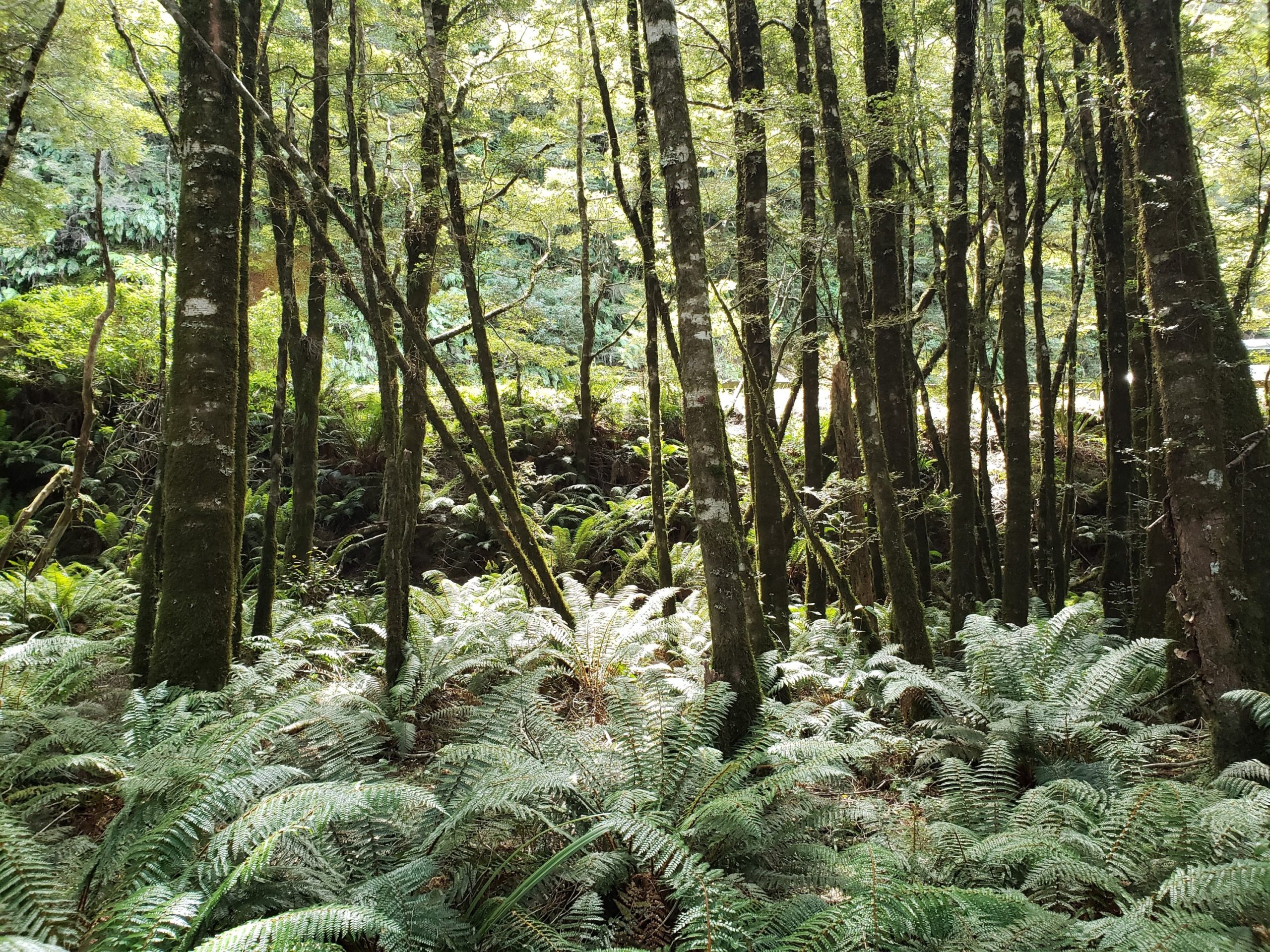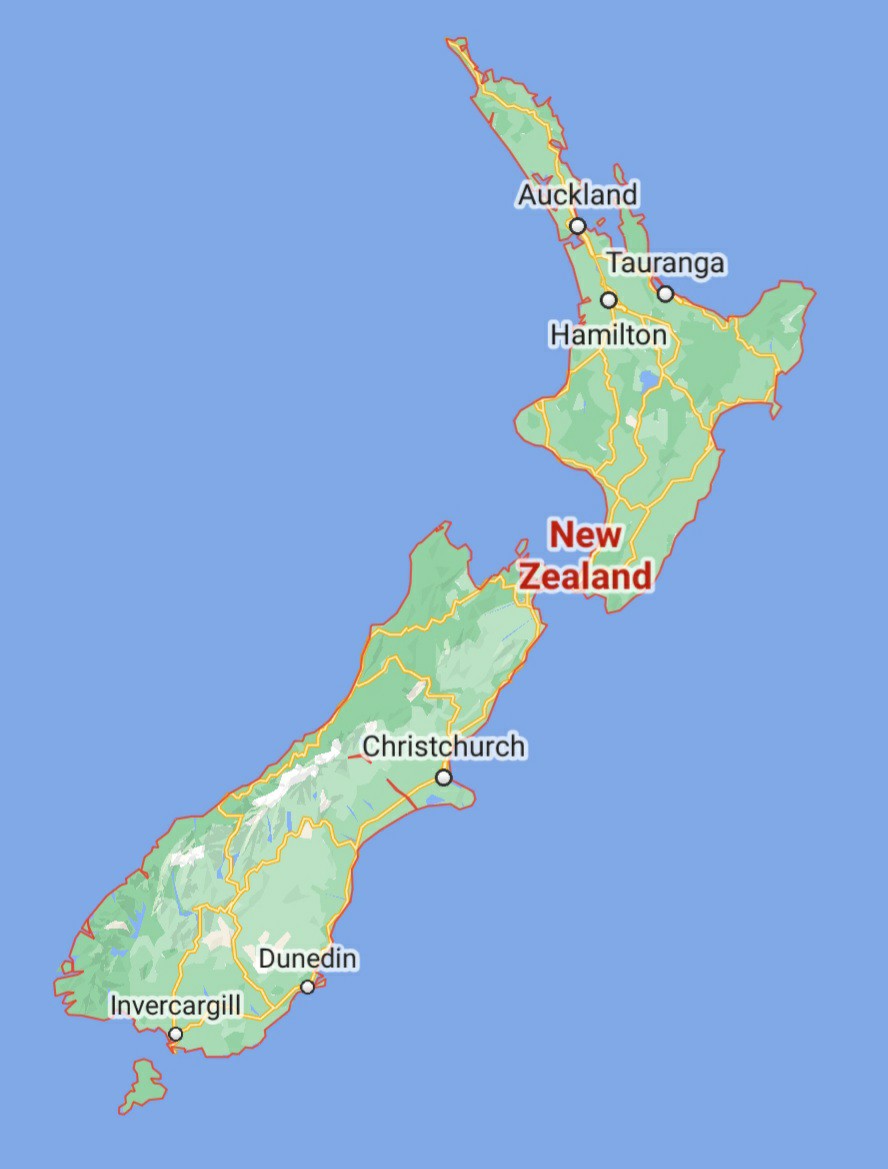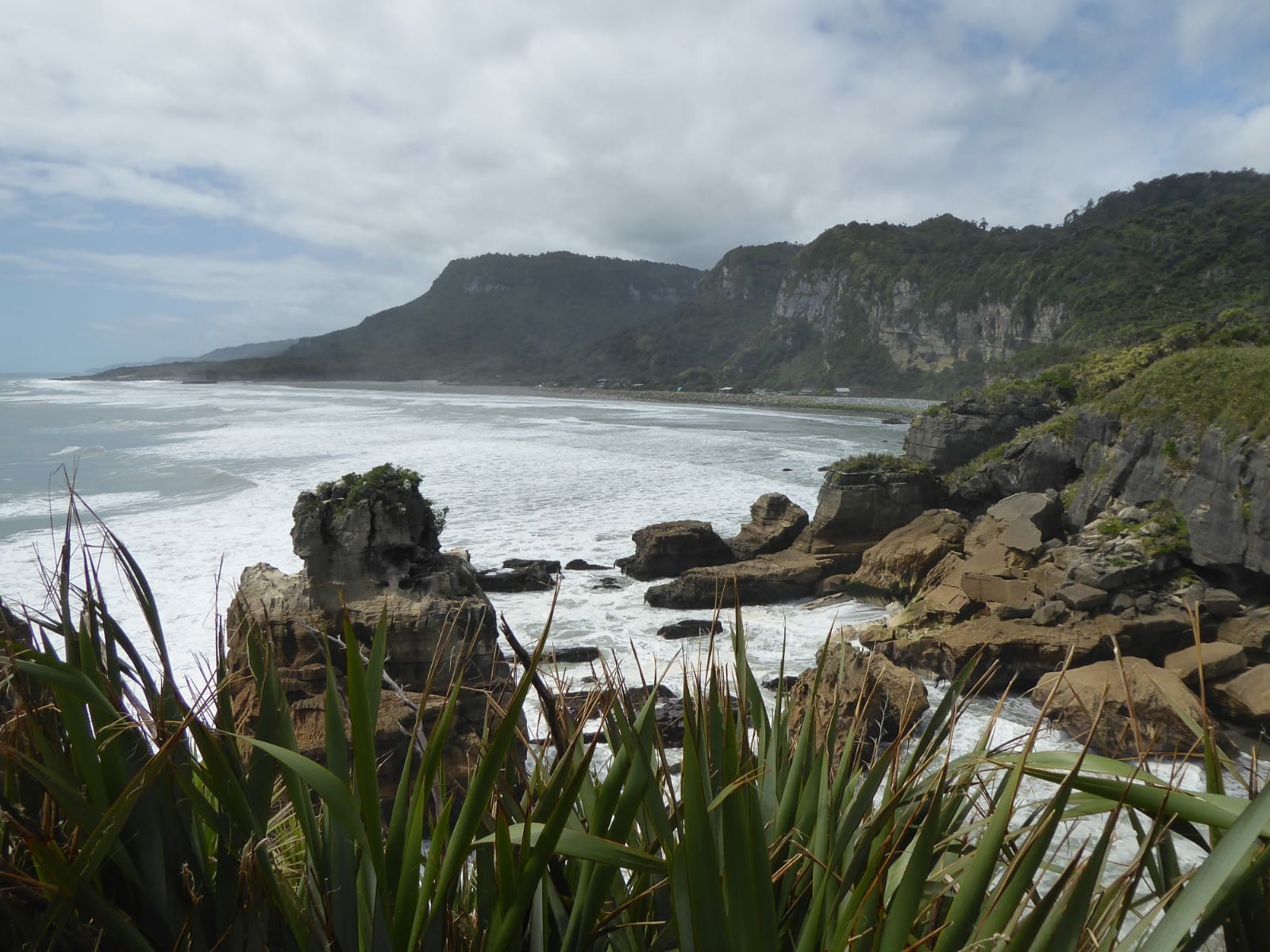3 February to 14 February 2020
Arrival in Christchurch
Any ideas I had about New Zealand came from the movies. The scenery looked splendid and the Maori culture was intriguing, but the country was too far/too expensive to actually visit.
Over time, I met Kiwis (The term is used with pride and thought of as endearing not derogatory. It refers to the New Zealander’s national symbol, the elusive, flightless bird– not the fruit, aptly and solely called in NZ, kiwifruit). The people were delightful and I hoped to visit their homeland someday, but that was that.
Then, a few years ago, I happened upon an unsual television series, Top of the Lake, filmed in NZ, with the not-to-be-missed Holly Hunter and Elisabeth Moss. The opening shot of mountains and lake dazzled me. My interest was given a fresh jolt.
Traveling in Japan then Australia made it finally feasible to go. I still knew remarkably little about the country, but at the end of my trip in Tasmania I took a crash course on the internet and bought the Lonely Planet Guide at the airport.
New Zealand is made up of the North and South Islands. The North Island, home to its capital Auckland, is populated with 77% of the country’s residents, and the Maori are largely concentrated there. The South Island is noted for its fjords and expansive national parks. Its largest city, Christchurch, suffered a devastating earthquake back in 2010 and another, even more destructive, six months later.
I gave myself a month in NZ, before setting off for Chile. Given my self-imposed time restraint, I concentrated on the South Island. Once again taking a road trip seemed ideal.
I’d left Port Arthur, Tasmania the morning of February 3rd and drove to Hobart Airport for a flight that afternoon. With a lay-over in Melbourne, I arrived in Christchurch just before midnight. I got my bag, passed through customs, and looked for a taxi. I knew the motel I’d booked was close, but the only driver at that hour quoted me a ridiculous price. I was tired, but not tired enough to be fleeced upon arrival.
I used Uber instead, and an enormous man who practically took up the entire front seat of his car pulled up a bit later. The road was nearly empty and too dark to see much, except various motel signs along the quiet strip leading from the airport. When we arrived at mine, I hurried out to get my bag in the trunk so the driver wouldn’t have to. He still seemed out of breath from putting it there.
An envelope, pinned to the entrance door of the motel, had my name and room number on it, and a key inside. No one was around. The decor of my room looked like it hadn’t been changed in decades, but it was clean, spacious, quiet, and had a small kitchen.
After a good sleep I sat with a mug of coffee, compliments of the motel, to map out a general itinerary. Heading down the east coast with a first stop in Oamaru seemed like as good a start as any. I looked for an accommodation. But all I could find available, using several websites, was an empty lot. I figured there had to be a mistake so phoned one of the B&Bs showing no vacancies to find out. A woman answered. “Everywhere around has been booked for months.” then added with a hint of astonishment. “Haven’t you heard about the Elton John concert?” It seemed like I was the only person who had not.
Setting Off
Despite the coffee and a good sleep, all the traveling from the day before was starting to hit me. I’d decided to visit Christchurch at the end of my trip, if there was time, and head out of the city that day. But driving several hours, in any direction, began to have little appeal.
Oamaru was no longer an option. Plan B was quickly devised. I’d go to Akaroa about an hour away instead.
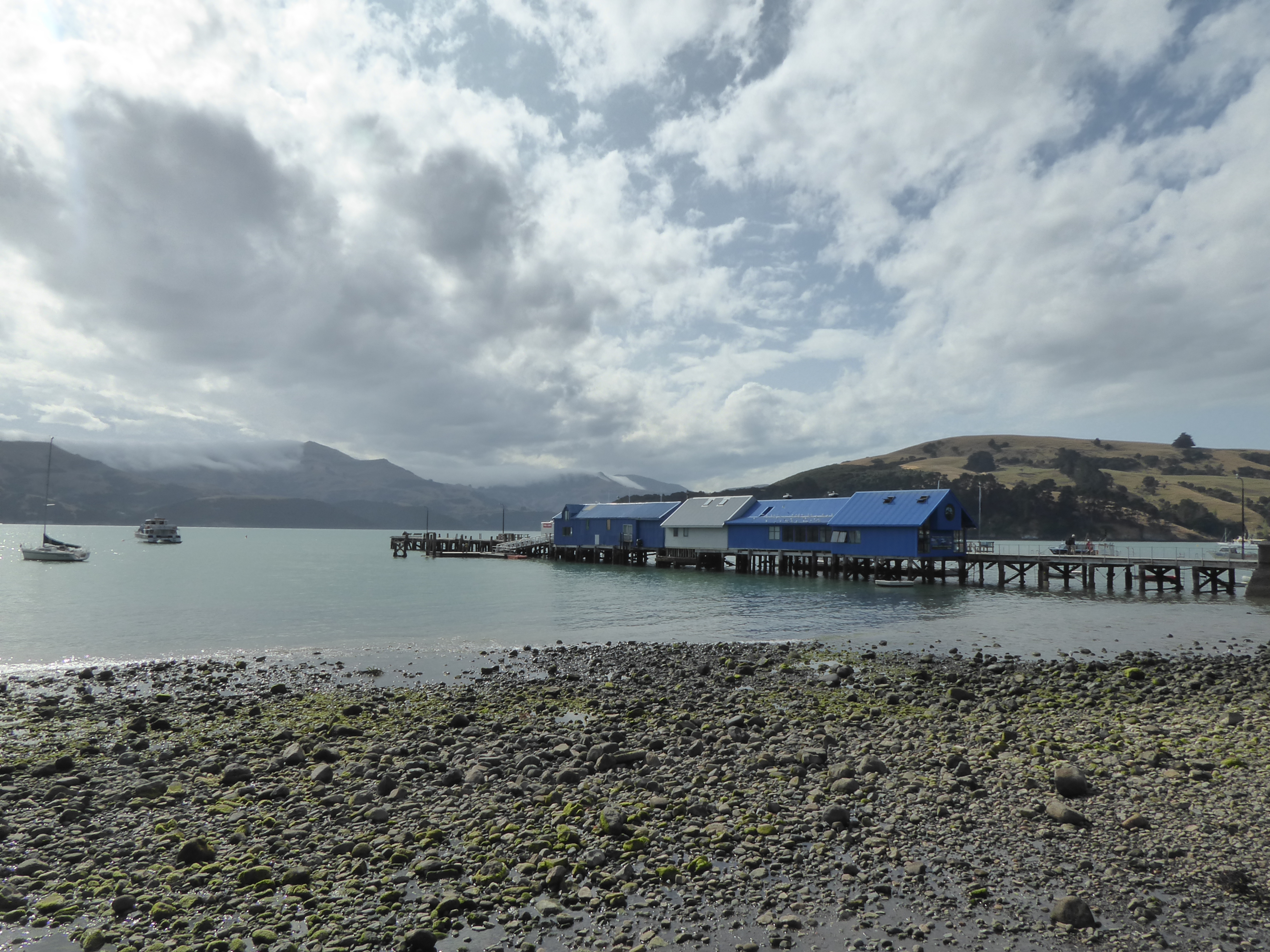
It didn’t take long before I was driving on country roads and getting captivated by the beauty. A body of turquoise water was appearing in the distance and I was headed right toward it.
Akaroa’s history of bloody conflicts between the Maori and British was hard to imagine. The town today is postcard pretty: dotted with lovely wooden buildings, quaint streets–many with French names (French settlers came later), parks, splendid water views (the harbor is home to Hector dolphins which unfortunately I didn’t see), and nestled among hills and the remnants of a volcano.
I spent the day admiring the scenery, the architecture, a playground with rusted but intriguing rides from another time, and dining on fresh seafood. That evening I relaxed on the balcony of my studio apartment overlooking the water. It was an auspicious beginning.
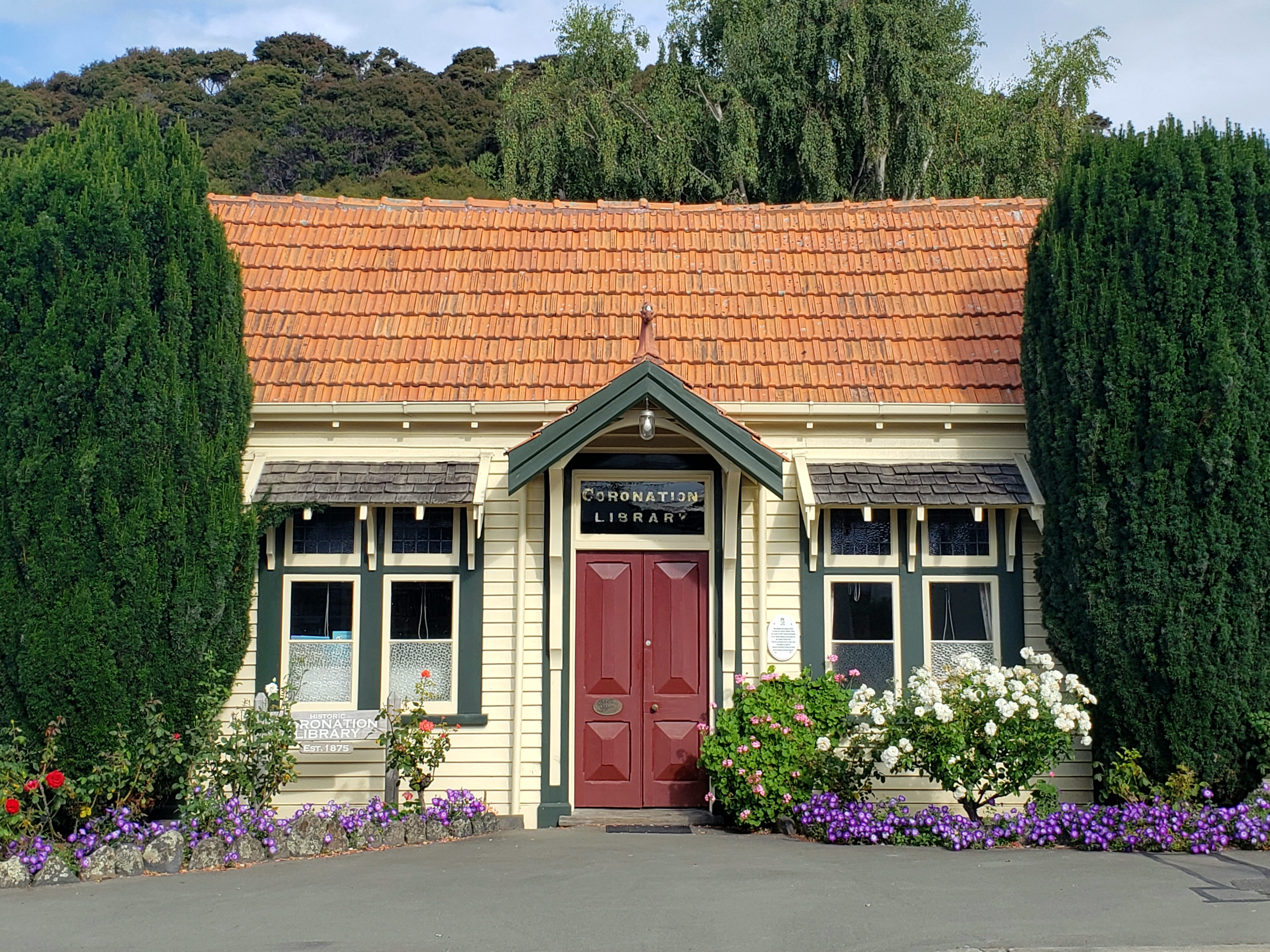

Leaving Akaroa I picked up a hitch-hiker heading back to Christchurch. Gee worked in town as a waitress and was heading home for the week-end. Leaving Thailand was something she’d dreamed of for years, but was fearful, and her family was against it. Her grandmother gave her the courage to go. Although she missed her family, particularly her grandmother, she loved her freedom and had no plans on returning anytime soon. I dropped Gee off at a crossroads where she’d arranged a friend to pick her up. She asked if she could hug me when we said goodbye. “Of course,” I said.
Heading West
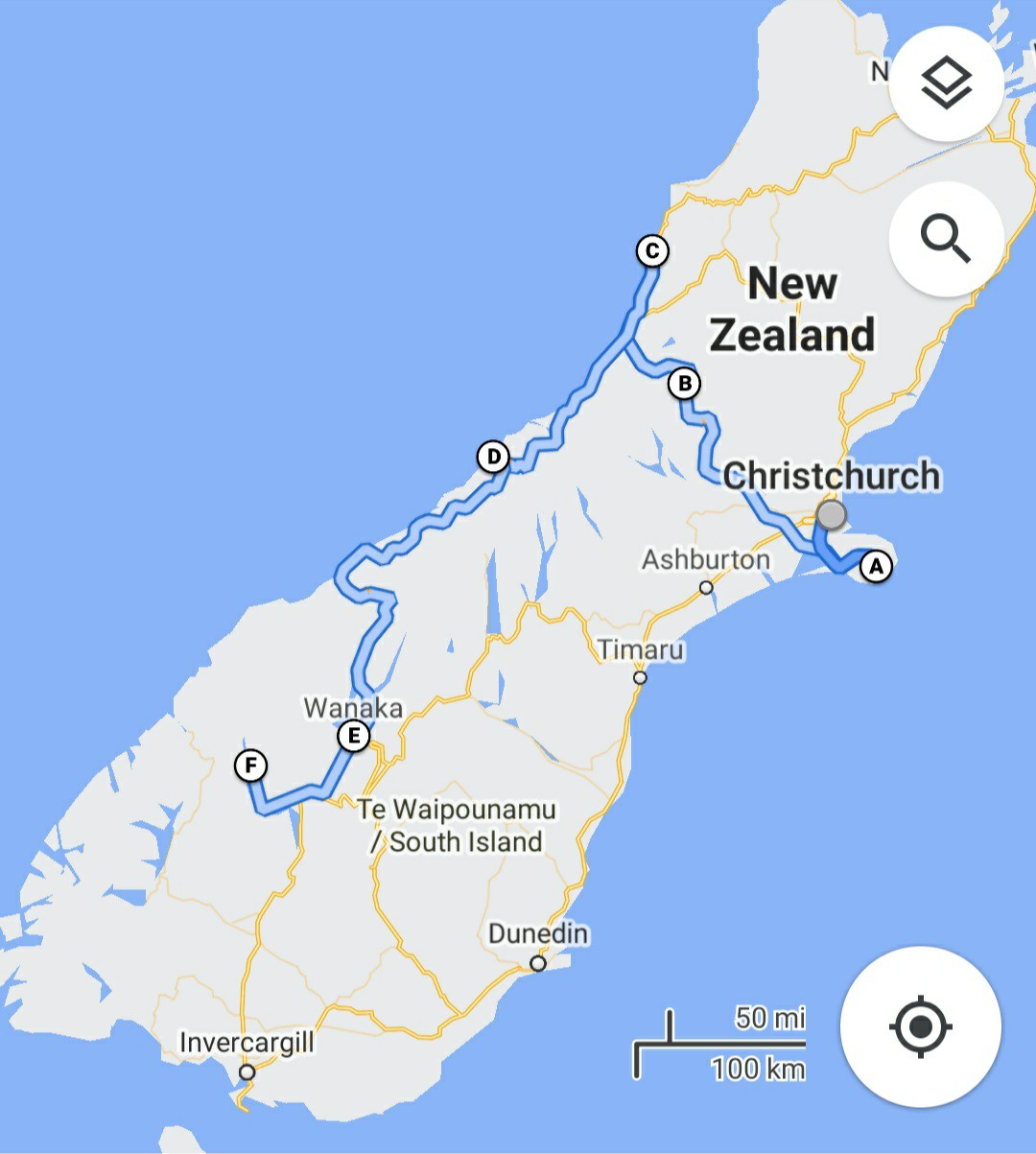
I planned on sleeping hours away in Otira. Heading west toward Arthur’s Pass I took winding mountain roads, passed over raging rivers, drove under expansive skies, and through wide open plains. It was beautiful country, new to my eyes, yet often reminded me of certain elsewheres. Until I saw these extraordinarily huge boulders looming in the distance. It’s hard to miss the Kura Tawhiti Conservation Area, also known as Castle Hill. It looks like giants played with clay and left their creations behind.
I stopped to wander around, up and down.
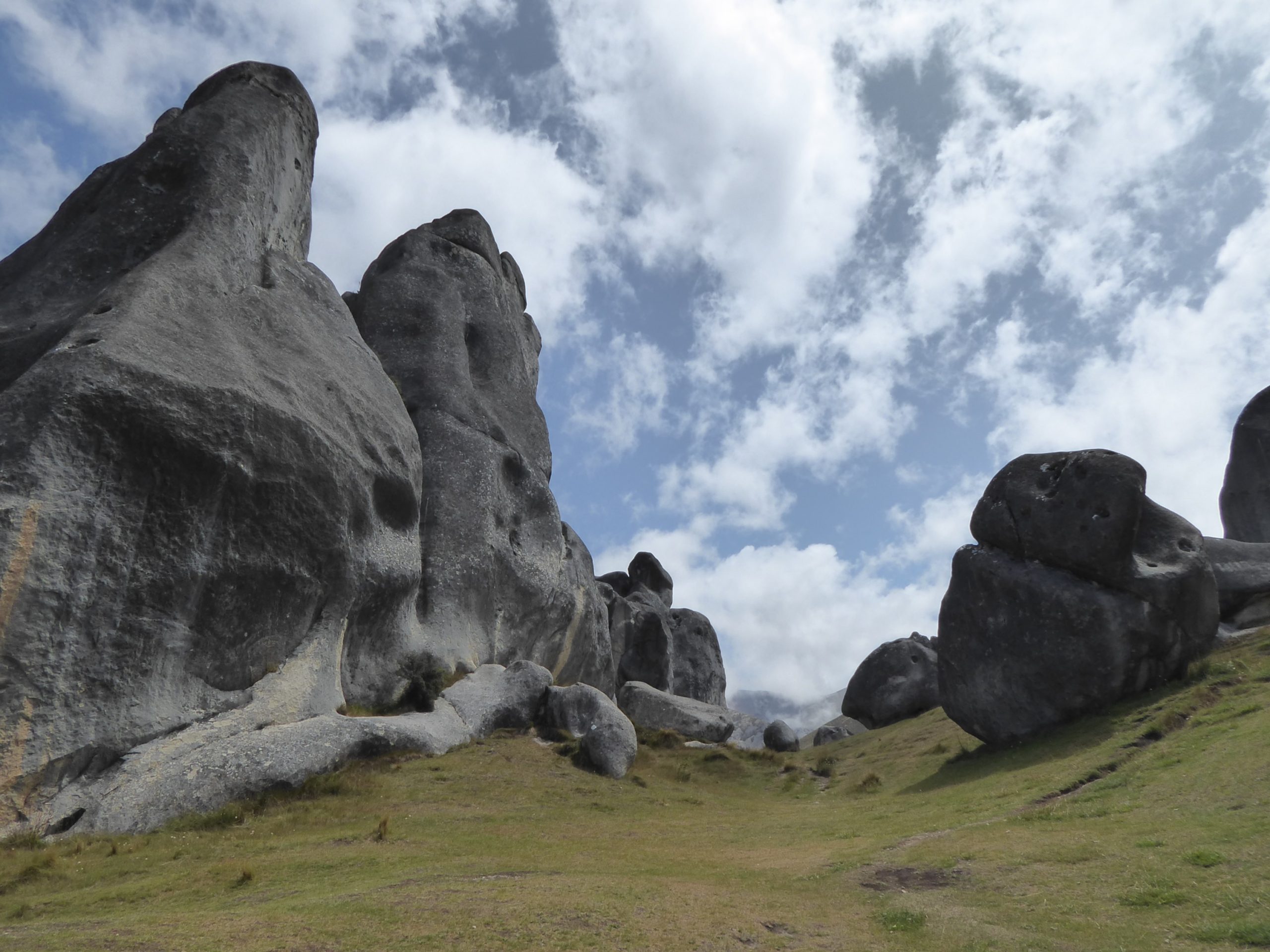
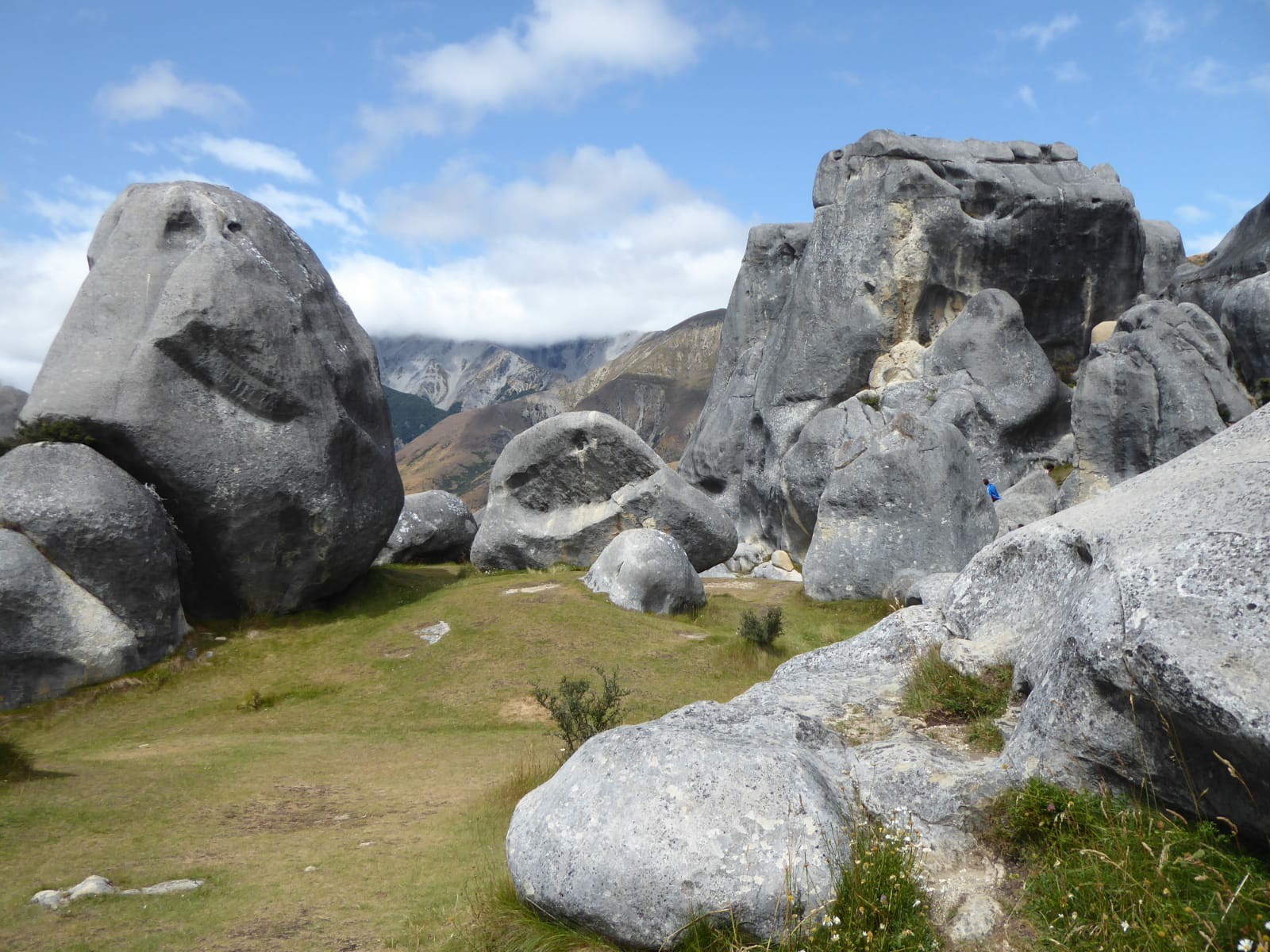
Towns were few, but the name “Otira Stagecoach Hotel” would have stood out anyway. I entered the large wooden building into the dining area/reception. A fire was roaring at one end and several toilets, mostly antiques, were lined up against a wall on the other. They seemed to guide the guests to the rooms down the hall. The walls were covered with photos and paintings, and shelves were lined with stuffed animals (the real kind), books, and a seemingly endless array of this and that and who-knows-what.
Lester, an older gentleman, who I later learned was the owner, stood behind a counter, chatting with a fellow in knee-high rubber boots, layers of woolen clothing, and a cap. Their similar attire aimed for comfort and staying warm. At this altitude, even though it was summer, Otira was cool and damp. The town averages 5.5 meters (18 feet) of rain per year.
While enjoying a regional specialty, cooked by Lester, whitebait and potato wedges, he told me about the hotel built in 1865 for a growing population in search of gold. (Today the coal miners in the area are fighting for their livelihood.) He’d gotten smitten with the place and decided to buy it. His story reminded me of Ralph’s back in Queenstown, Tasmania. Lester too was working to restore the hotel with period furniture, fixtures, decor. Unlike Ralph, his purchases included stagecoaches and virtually the entire town of Otira too.
Lester started this labor of love with his companion in 2014 but according to him, his hording did the relationship in. Apparently that fifth or was it the tenth stagecoach he purchased sent her packing. He was now pretty much running the place on his own.
My room had a four poster bed, small wooden tables, a desk, old photographs, and various knick-knacks holding secrets from the past. The separate bathroom was furnished with a floral antique sink and toilet: the one with the tank high up and long pull cord. Only the shower was new. The room’s large windows revealed a verdant mountain mostly shrouded in mist. Train tracks lay in between and long coal trains passed by. Later that evening their soothing sound and gentle rhythm lulled me to sleep.
Moving On
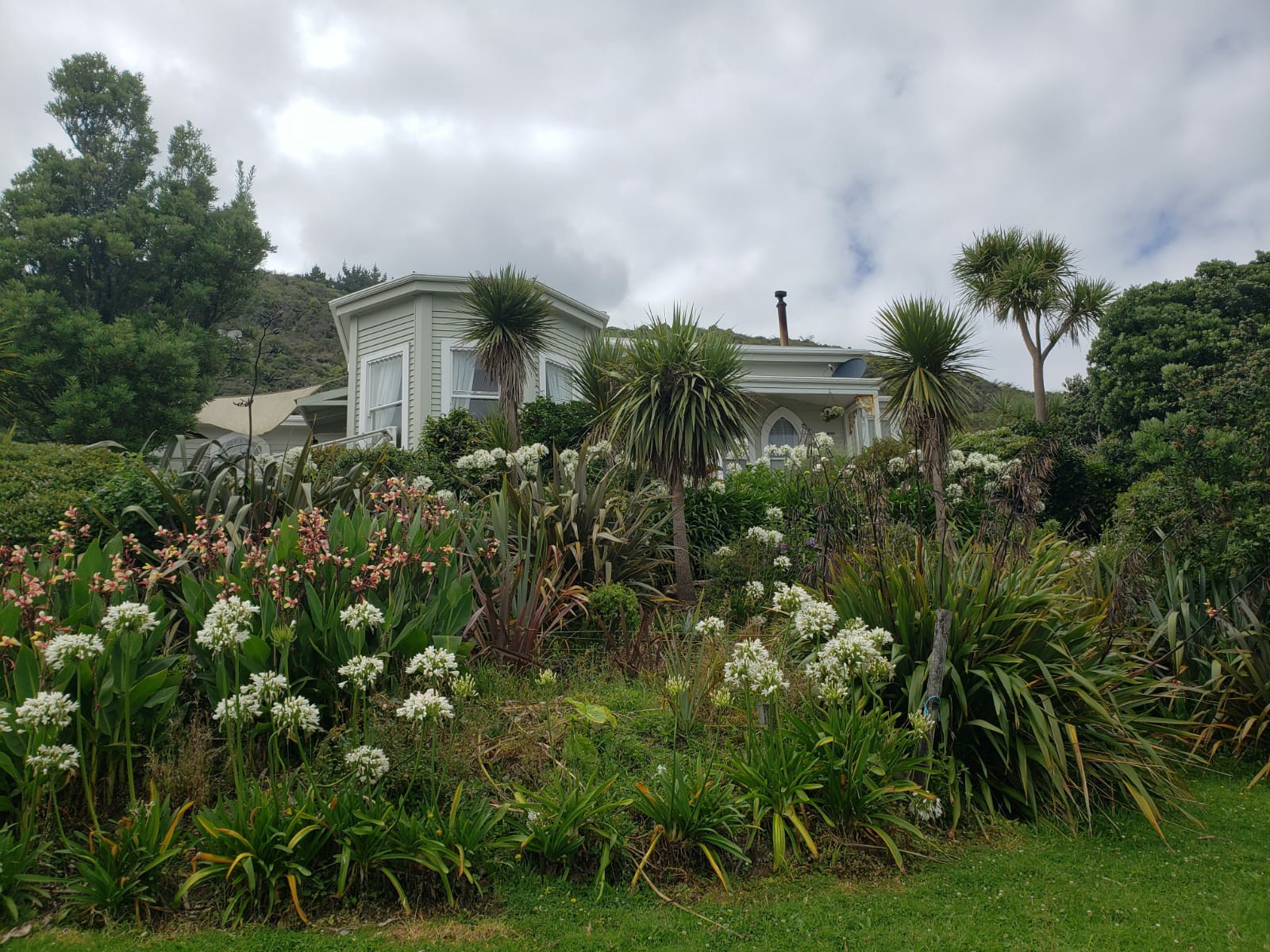
Mary lives with her two teen-age daughters just outside of Greymouth across the road from the sea. She rents a guest suite where I booked a night. Her home is surrounded by a lush garden she’s been nurturing over twenty years. A palomino lazily grazed in her large front yard.
I was invited over for tea. Mary’s sunlit home, like the guest suite, with her artwork hanging on the walls is beautifully decorated and inviting. We sat on high stools in her kitchen as her daughters came and went. She and her daughters are beautiful. They’d all just come back with a cousin from tramping (hiking) ten days, fourteen hours a day, carrying everything they needed in their packs. The cousin, thirteen, had never hiked before, but she did fine, even while crossing rivers waist high.
Having admired her garden from afar, I asked for a tour. We weaved in and out the narrow paths under trees whose branches hung with fruit, between robust bushes and flowers, and across neatly dug beds with cabbage, broccoli, and herbs. Mary began picking plums and berries along the way and invited me to pick them too. We ate as we walked. Their sweetness was intoxicating and the song of cicadas, birds, and the ocean’s ceaseless roar filled the air.
That afternoon I followed a path along the shore and through a forest to the Point Elizabeth lookout with spectacular views.
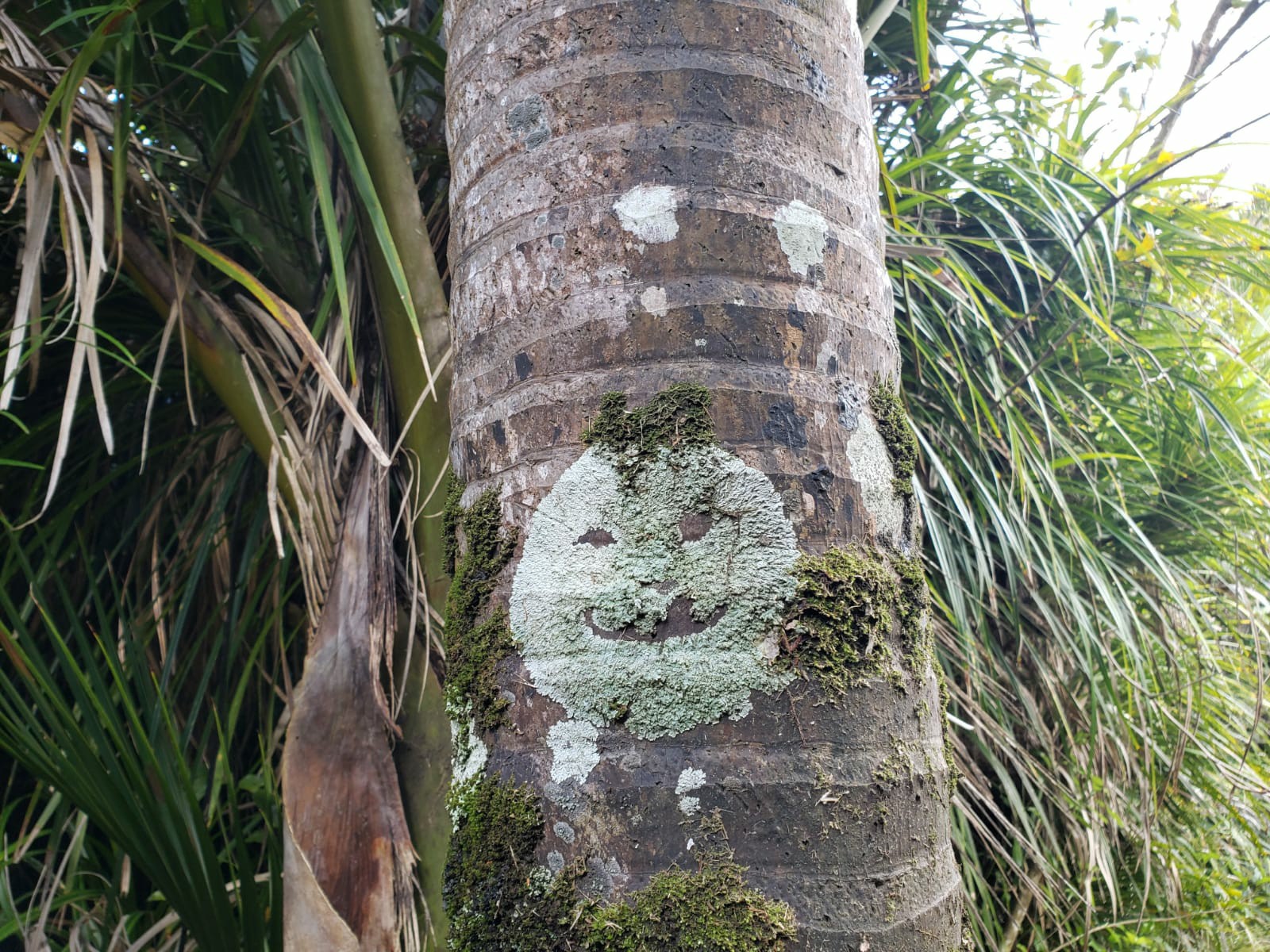
I’d passed a sign marked “Museum” on my way to Mary’s and decided to stop on my way out the following day.
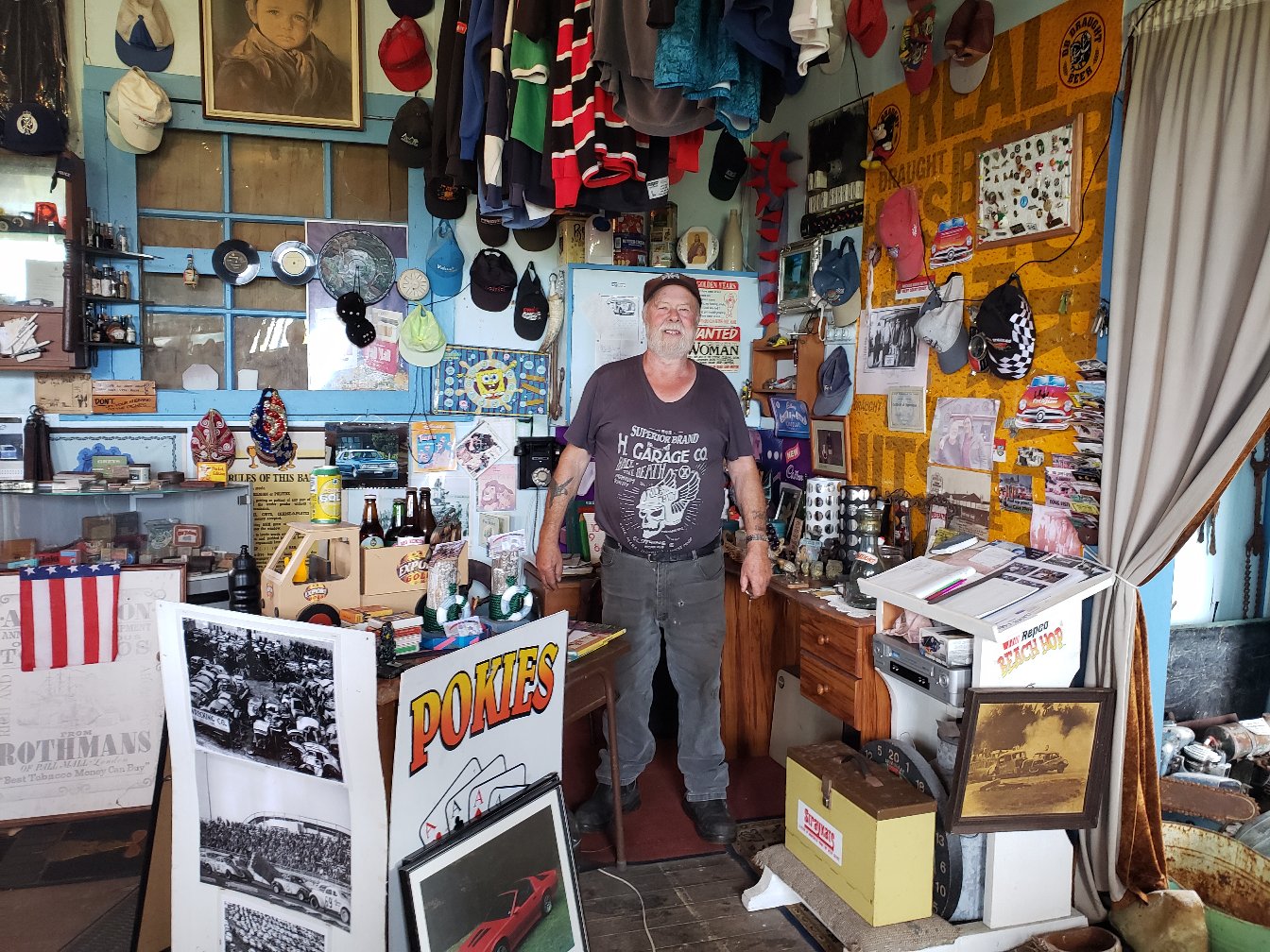
The museum was just next door to Parky’s Auto Wreckers and I think the owner/guide/stock car driver/mechanic/collector/junk car dealer was one and the same. He offered to show me around. The two large rooms were packed floor to ceiling with radios, vacuum cleaners, teapots, matchbooks, watches, and just about anything and everything one could collect. Hundreds of baseball caps hung from the ceiling.
When I mentioned that the museum reminded me of the Otira Stagecoach Hotel, the owner said “I sold him a bunch of things” and with no hint of irony added, “But he’s got much too much stuff!”
Once I hit the west coast, I’d thought to head south but the Paparoa National Park, and the famous Pancake Rocks, looked too intriguing to miss. I made a short detour north instead.
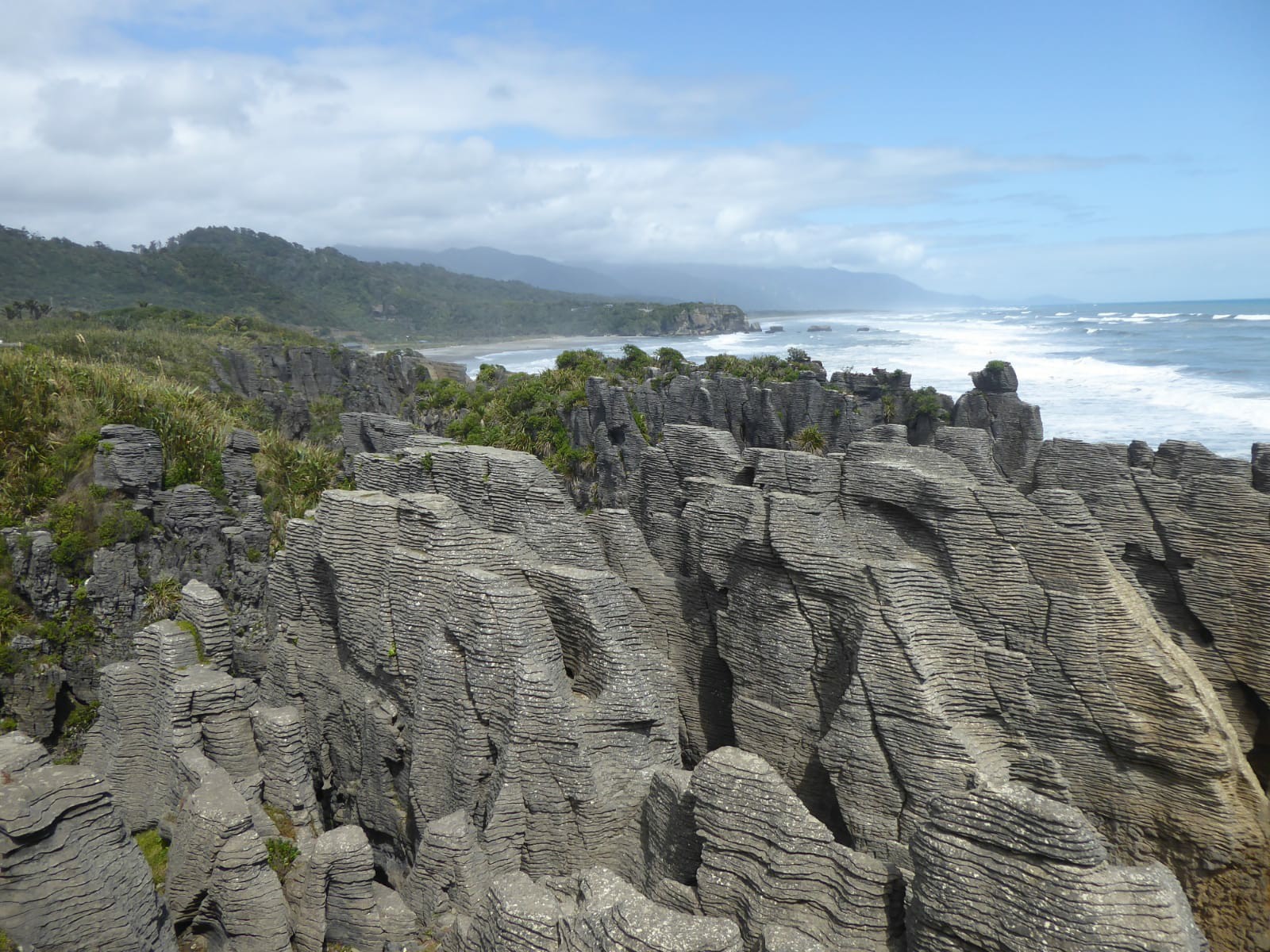
I booked a few nights in a bach (pronounced “batch” as in bachelor’s pad, but more a summer cottage) further up the coast.
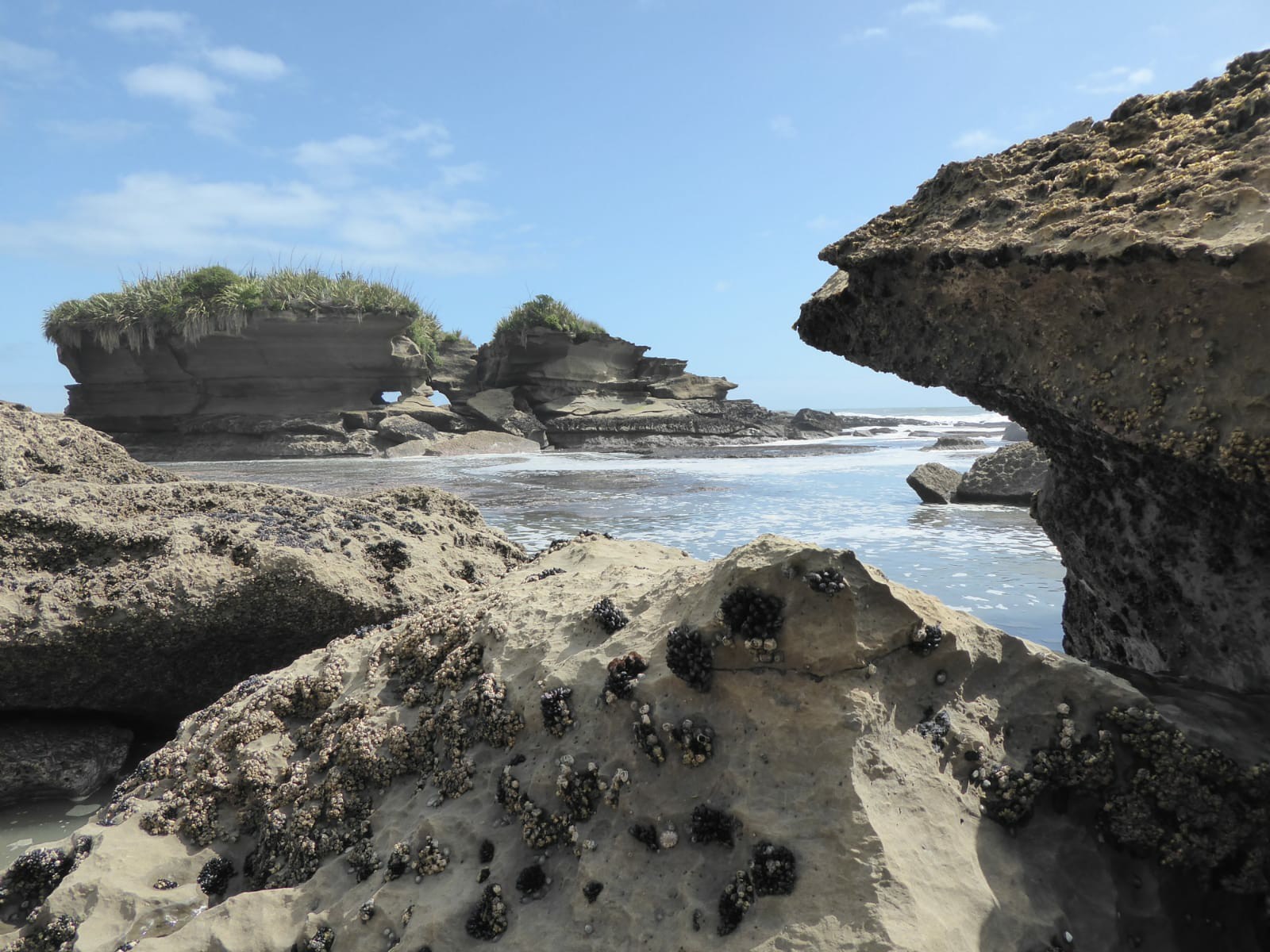
The owner called to ask if everything was okay. It was. The bach offered a splendid view and sounds of the sea only meters away.
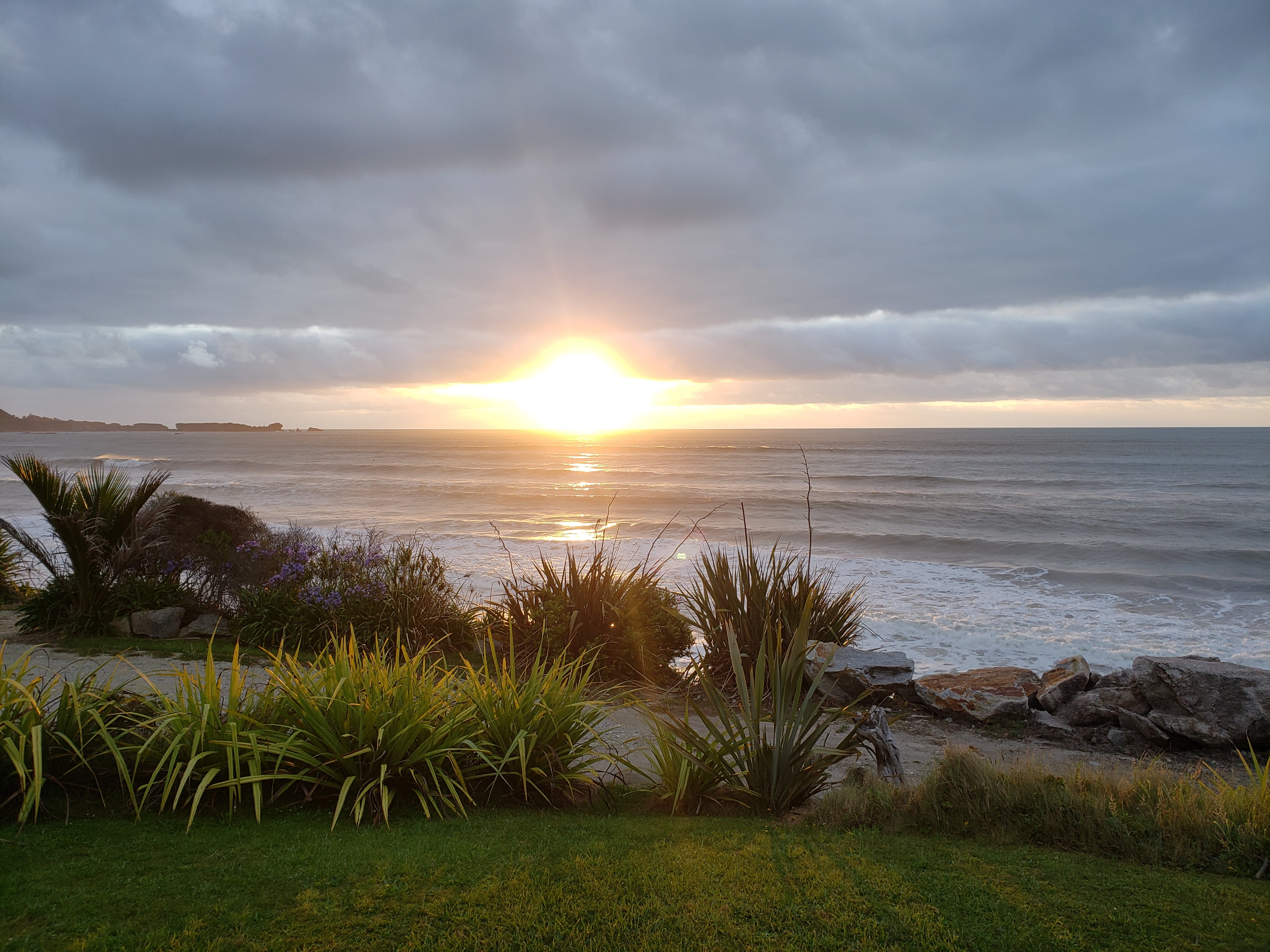
He asked if I’d been collecting the jade from the beach. I hadn’t noticed any, but after our conversation when I returned for another stroll it seemed green stones were everywhere. Few, if any, I suppose were valuable, but they were fun to collect while I imagined amassing a trove of riches.
Driving to town for groceries the next day it was impossible to ignore the sky becoming dark and ominous. When the heavy rains came the long hike I´d planned was doubtful. And then I passed a lone building advertising Underground Glow-worm Tours. Perfect!
The only other tourists in my group were a couple from Martha’s Vineyard who’d made “tons of money selling soft pretzels”. We took a tiny train through a rainforest then walked with our guide through a series of caves filled with splendid stalagmites and stalactites. Further on in a smaller cave we were told to turn off the head lamps we’d been given and look up. Suddenly we seemed to be gazing at a night sky glistening with stars. It was spectacular. I was instantly smitten with glow-worms!

Heading South
After my stay in the bach, I retraced part of the coast heading south and stopped in the sleepy, small town of Okarito that lies on the sea.
And two lagoons.
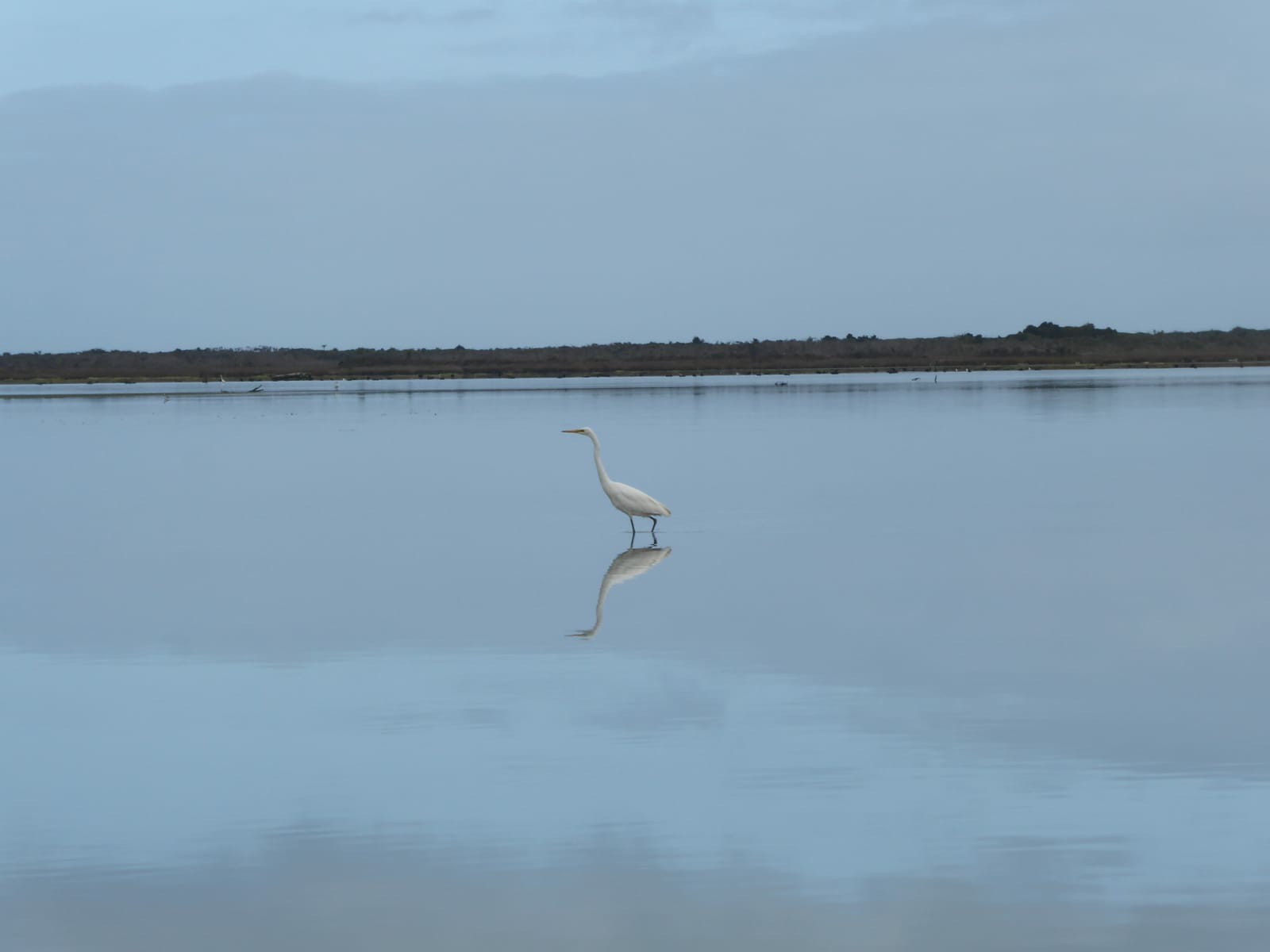
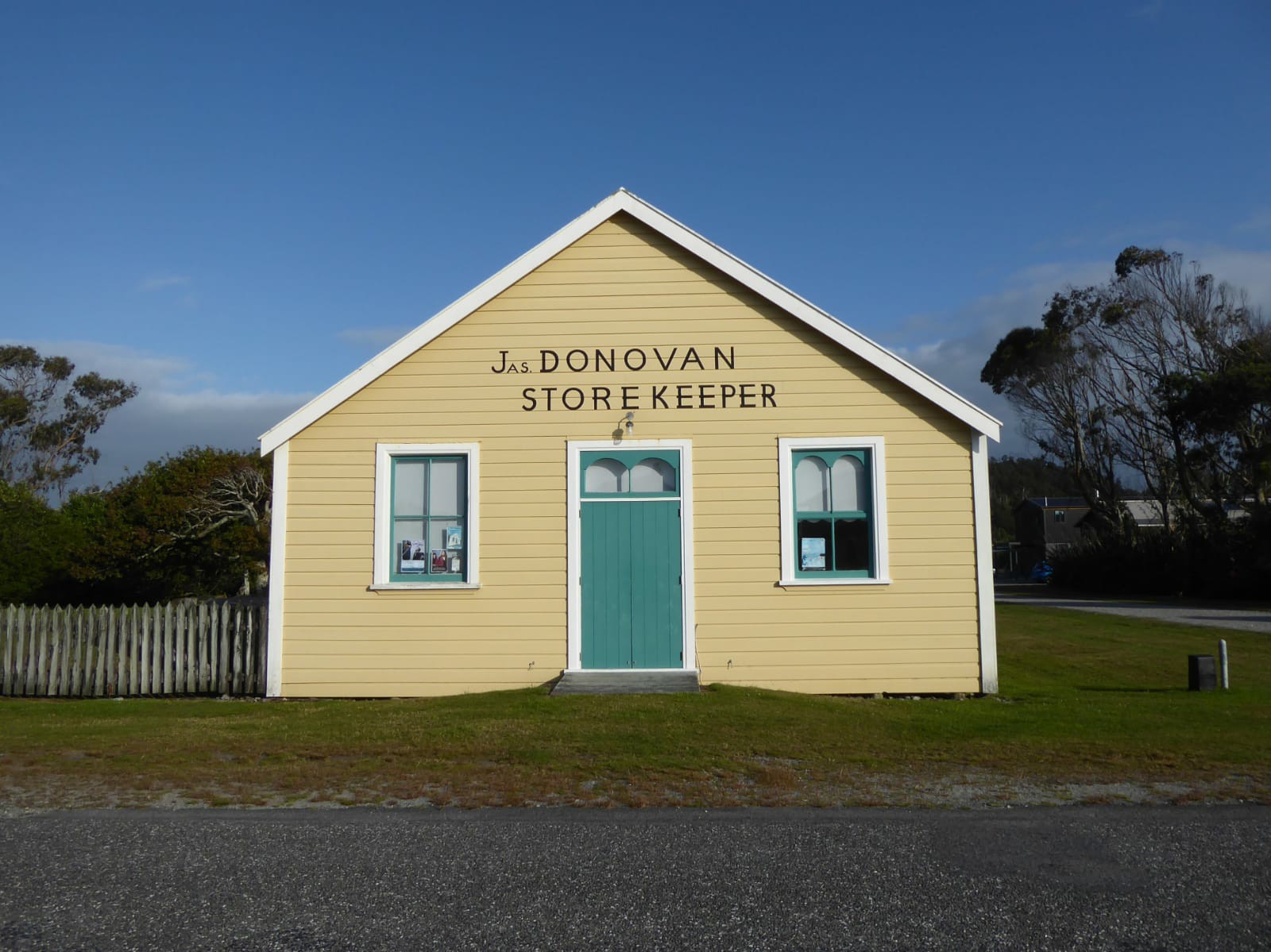
Racheal managed one of the few accommodations in Okarito. When I reserved two nights in one of the cabins she didn´t ask for my full name or credit card number, she just said, “See you tomorrow then.”
When I drove up, Racheal was stretched out on a beach towel reading a magazine. She was wearing a bright red sundress and enjoying the bright rays that I’d been shielding myself from.
Our conversation flowed easily. There were few tourists. The season was nearing an end. She wasn’t sure where she’d be going next. She went where the work was. In the meantime she was collecting herbs and plants for her homemade salves and enjoying the days.
Racheal suggested several hikes in the area and a boat tour of the lagoon. There was also Andris Apse, a noted nature photographer, who lived in town and had a gallery worth visiting.
The Three Mile Pack Track ascended to the Okarito Trig Lookout, descended to the Three Mile Lagoon, and looped back to a walk along the coast, about 10 kms in all. But Racheal cautioned, I had to time my return with the low-tide late that afternoon.
With time to spare I took the tour of the breathtaking lagoon seeing/hearing multitudes of birds new to my eyes and ears. Then stopped in at the gallery. The photographer was holding court with some admirers. His work taken throughout the world was large format and stunning, as were the prices for his limited edition and unique prints.
While looking around, I couldn’t help but listen in. He showed little interest in discussing travel, unless it could be steered toward all the places he’d been, or photography in general. But he shared this: after spending months composing an image in his head he takes that shot. It’s the only photograph he takes all year.
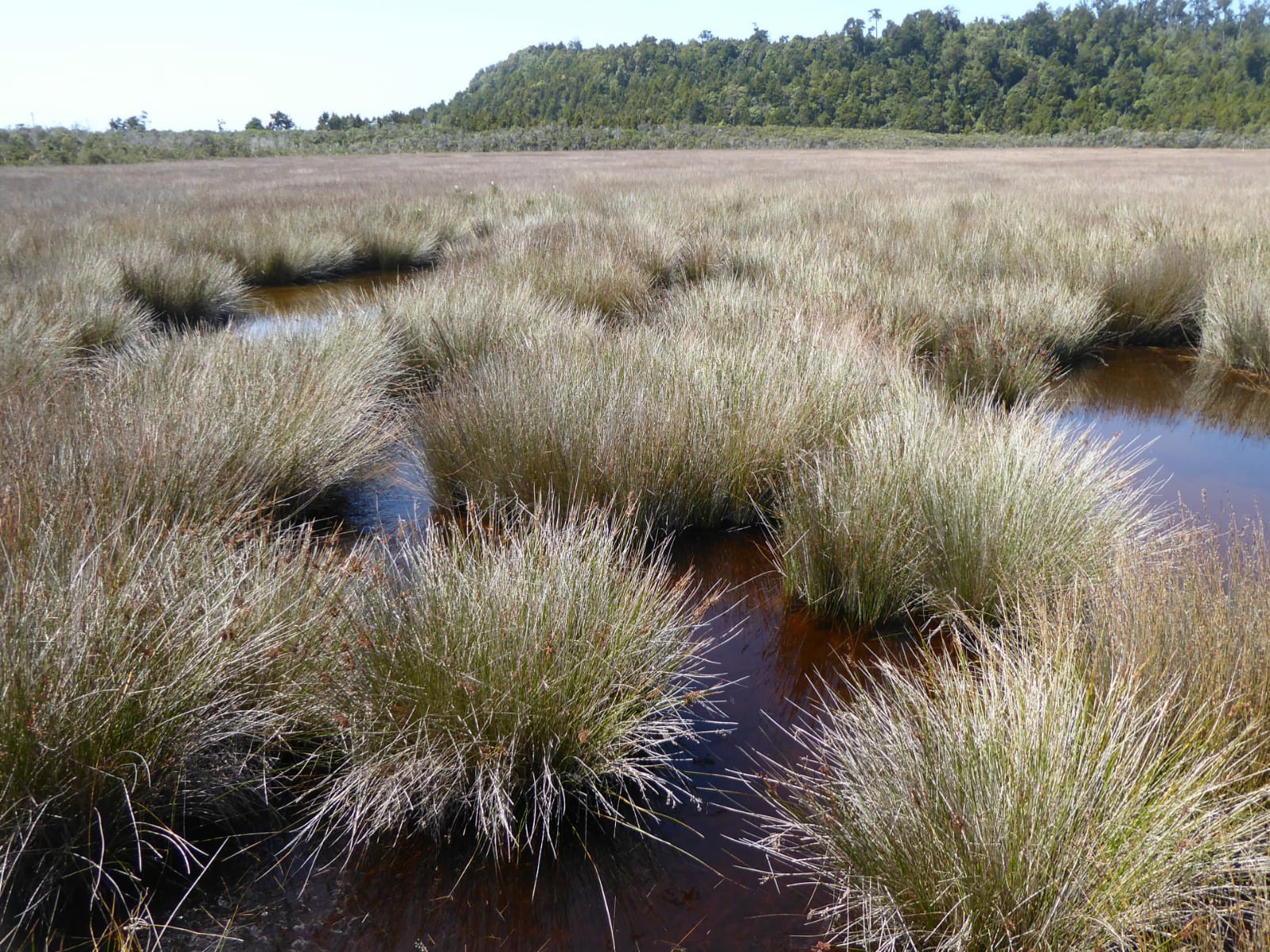
The steep walk up to the lookout offered a magnificent view of the Three Mile Lagoon and mountains in the distance. But the ascent was tougher than expected. Hikers gathered at the top exhibiting their various states of fitness. All looked relieved to be there.
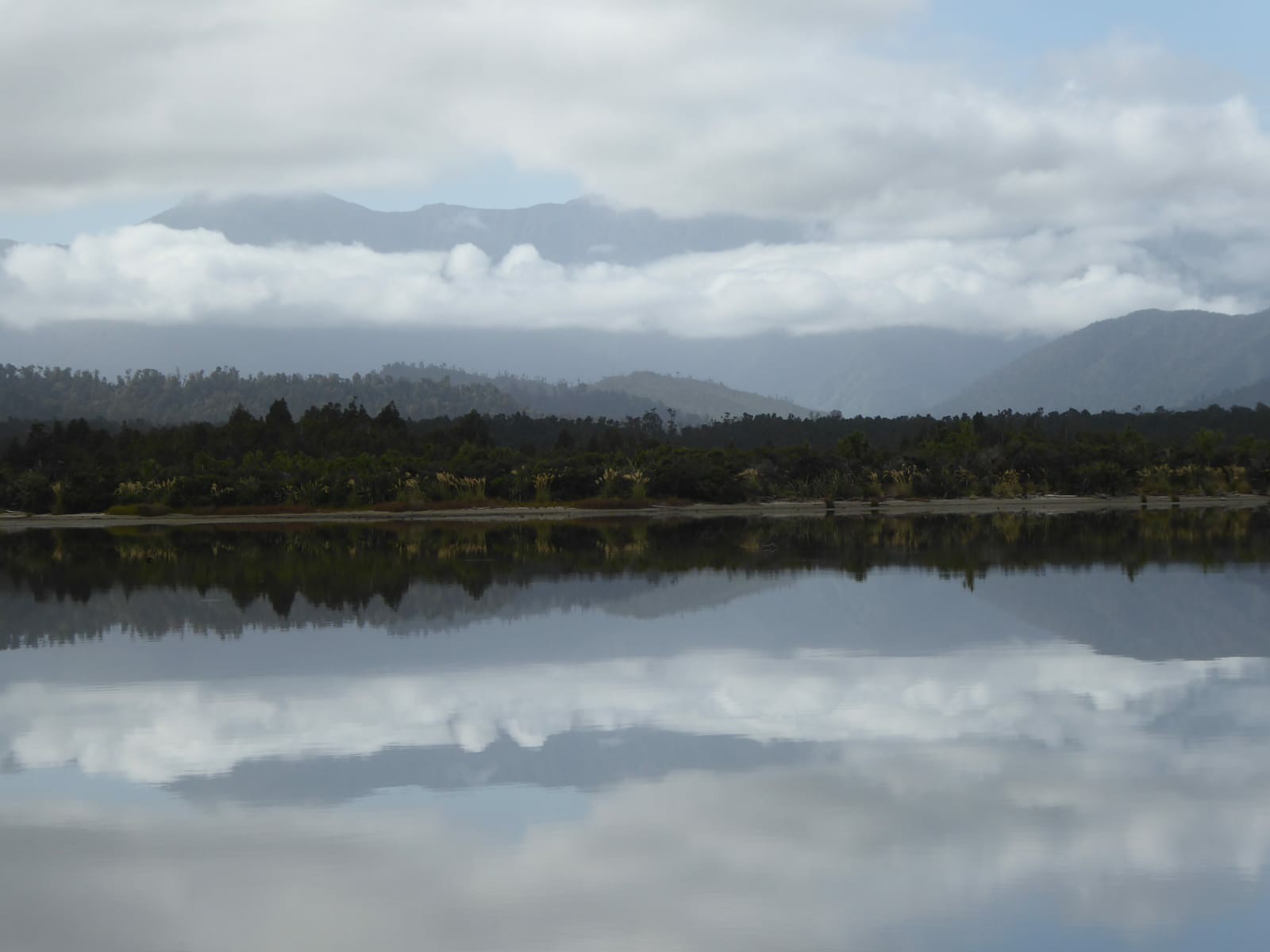
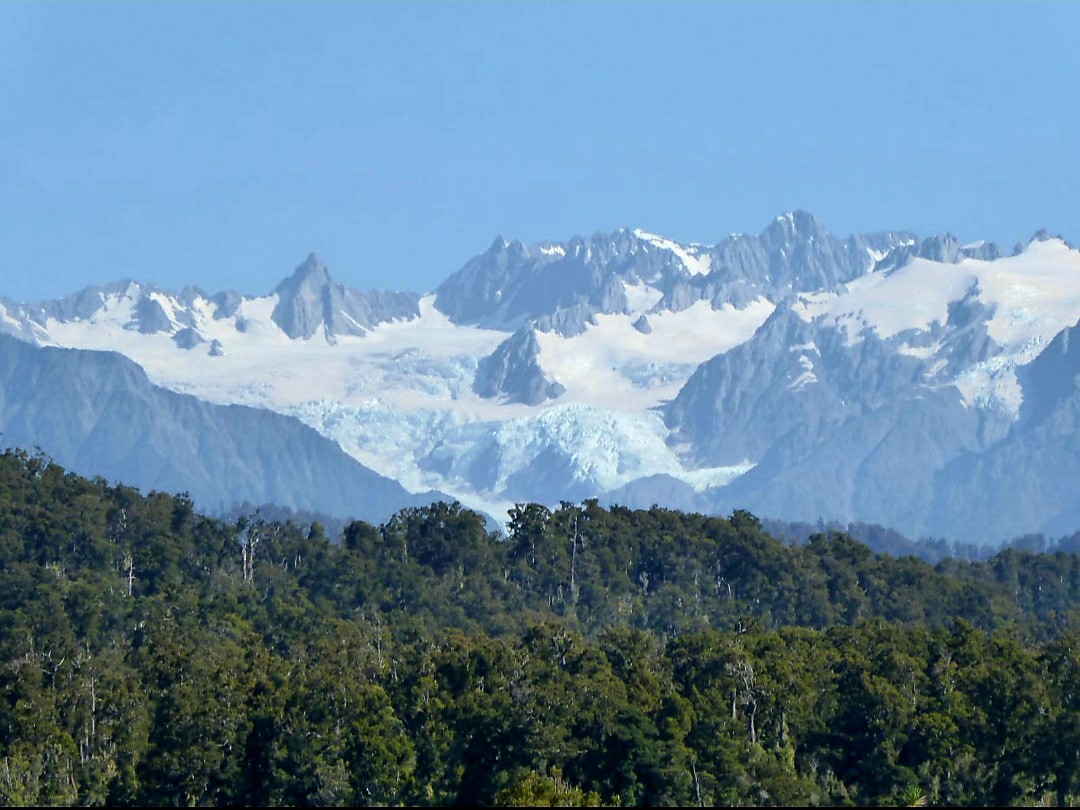
I was keeping an eye on the time. Racheal hadn’t been the only one to mention the importance of the tides.
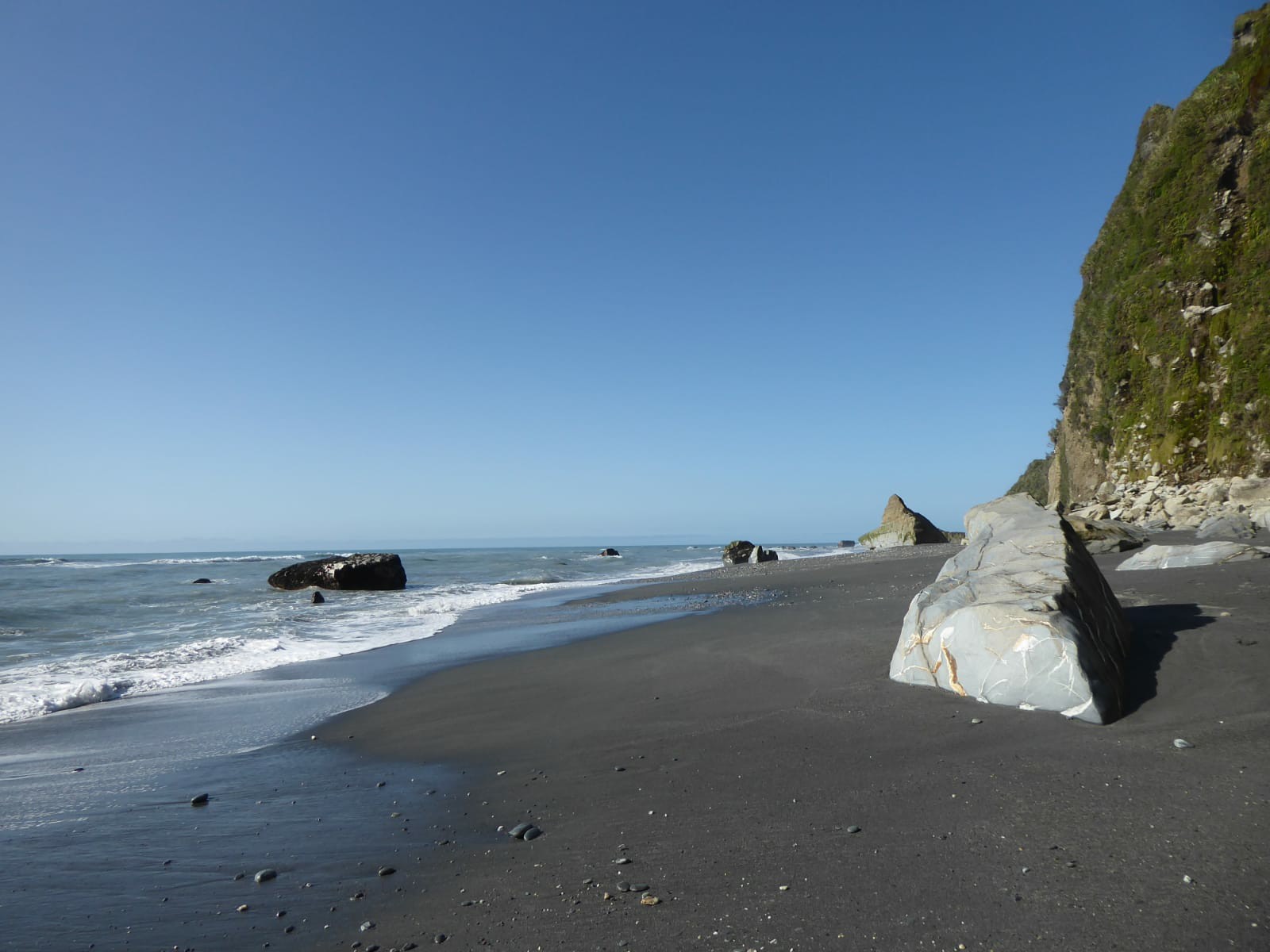
When I got to the beach, I saw why keeping track of the tide was so important The shore was quite narrow and abutted cliffs too steep to climb. When the sea came in there would be nowhere to go.
Racheal invited me the following morning for coffee, before I continued south, and gave me a list of handwritten places she said I shouldn’t miss. I made sure I didn’t.
And, as always, the journeys from place to place were often as memorable as the destinations themselves.
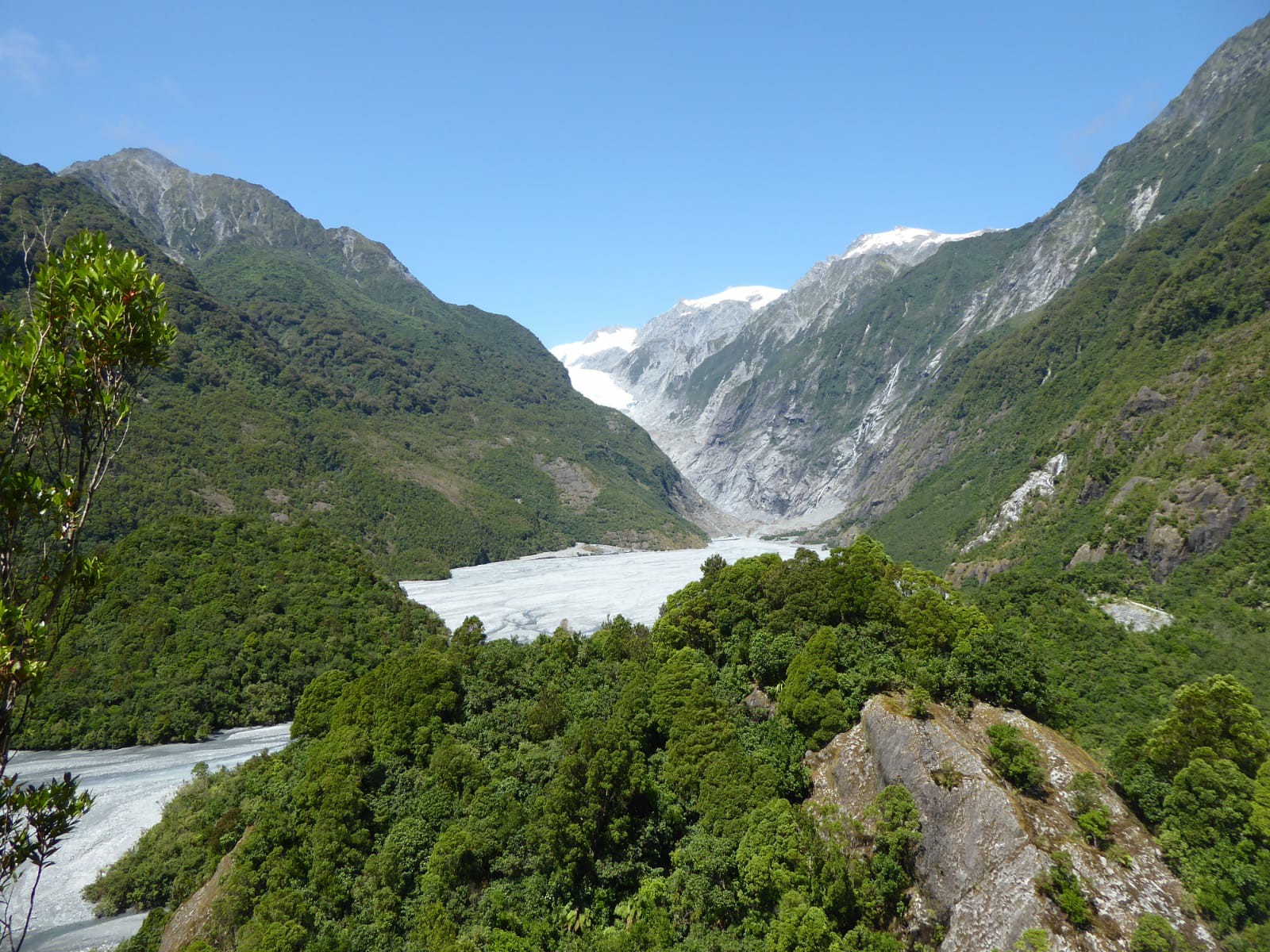

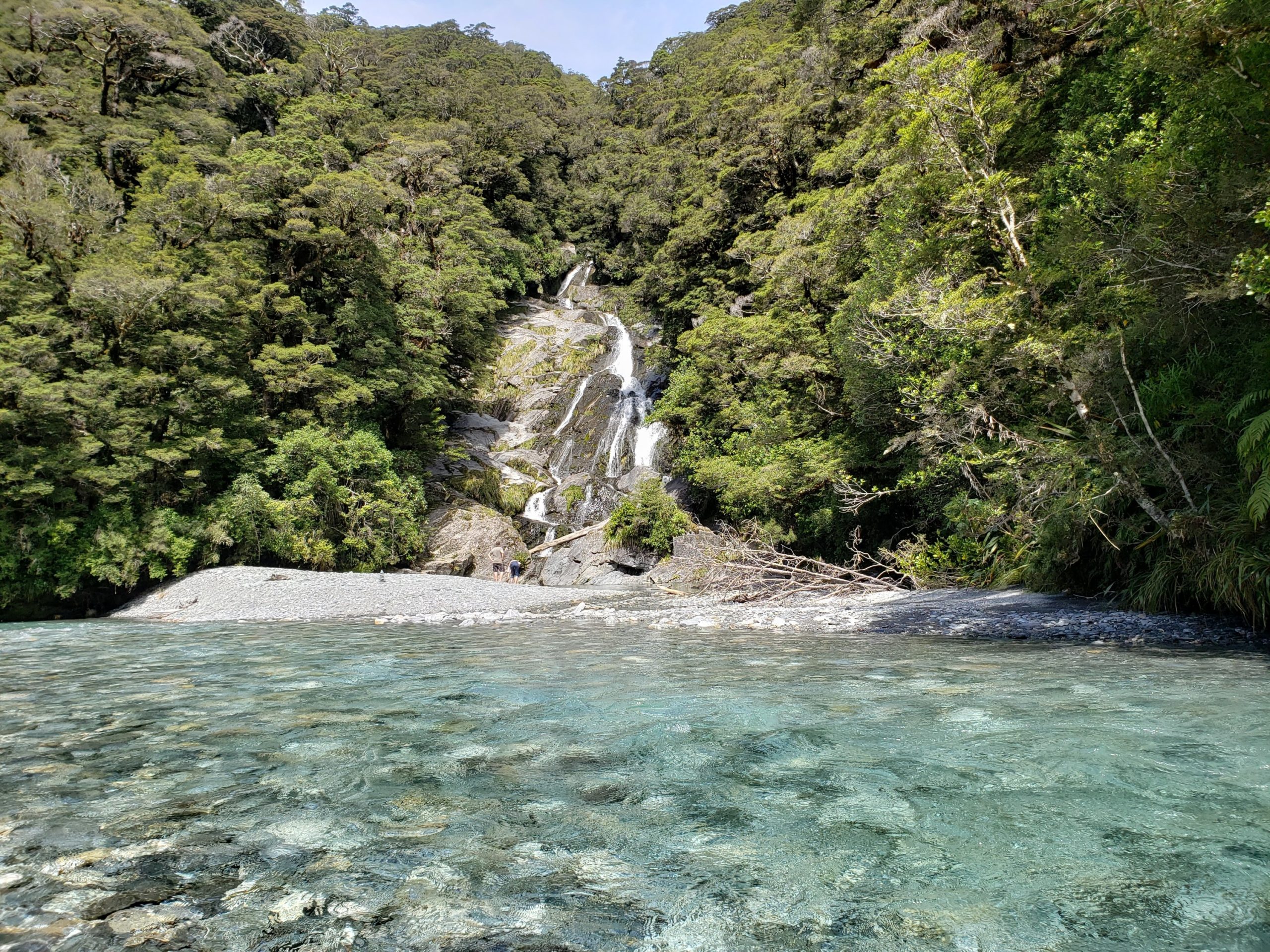
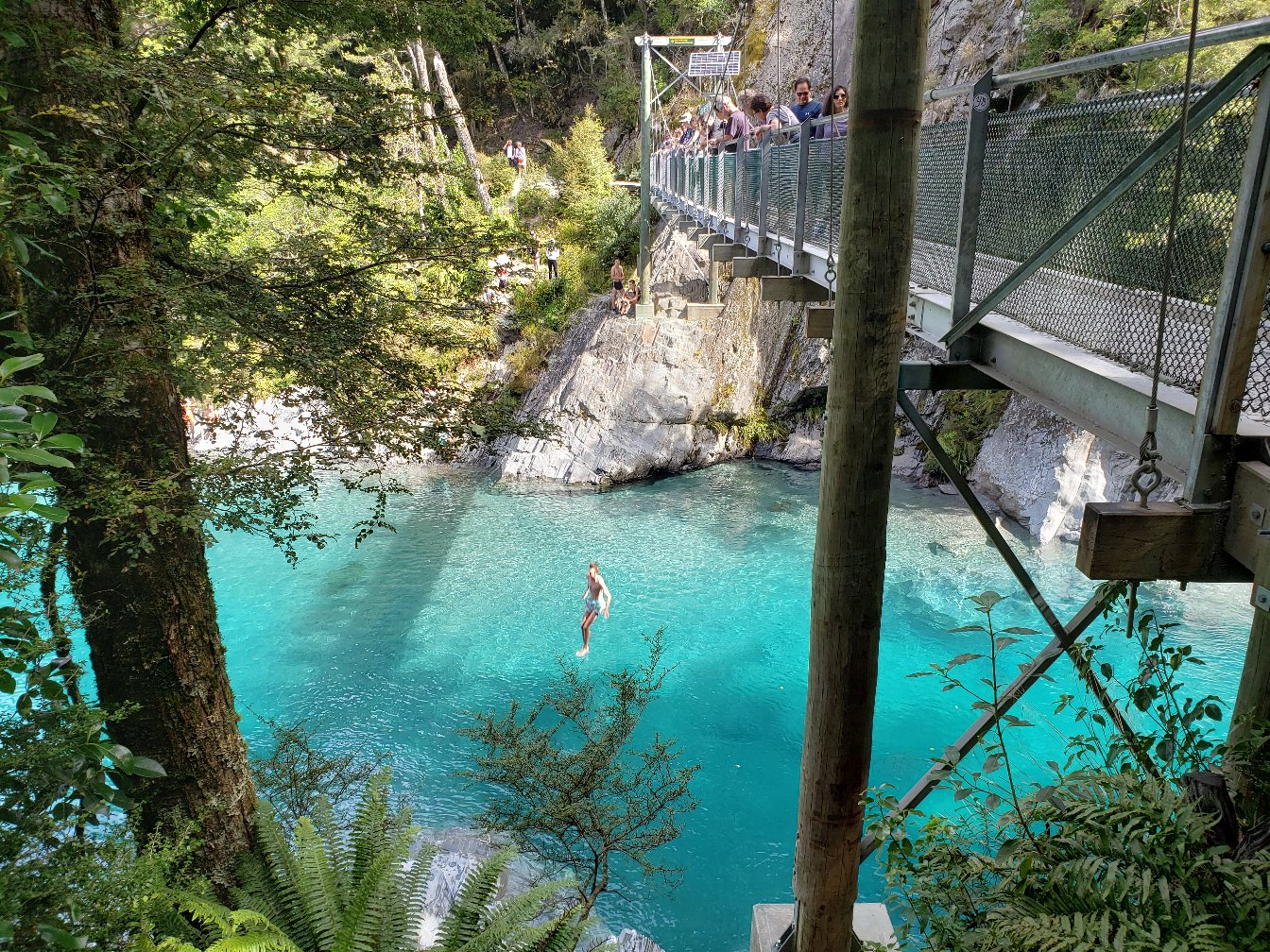

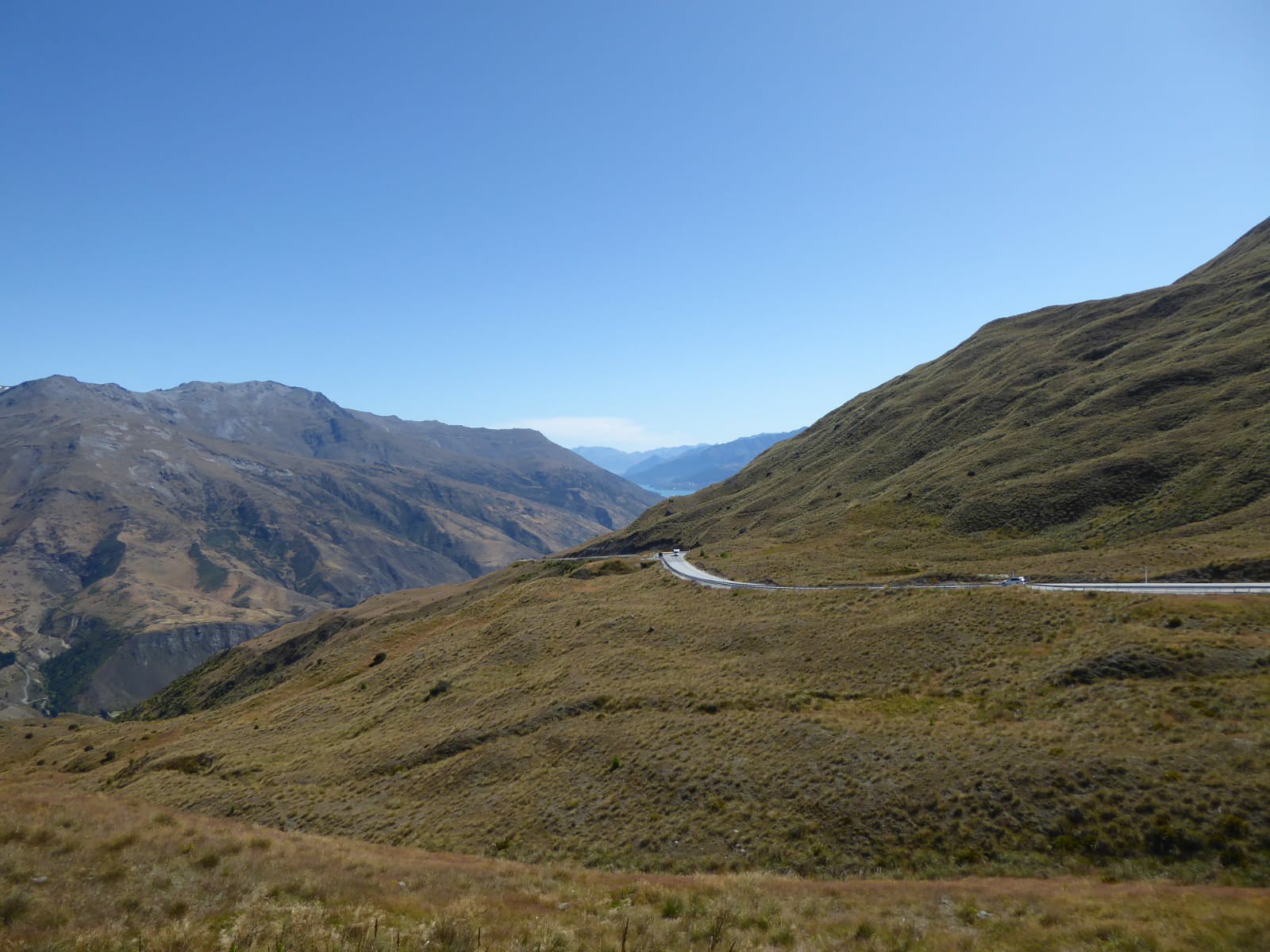
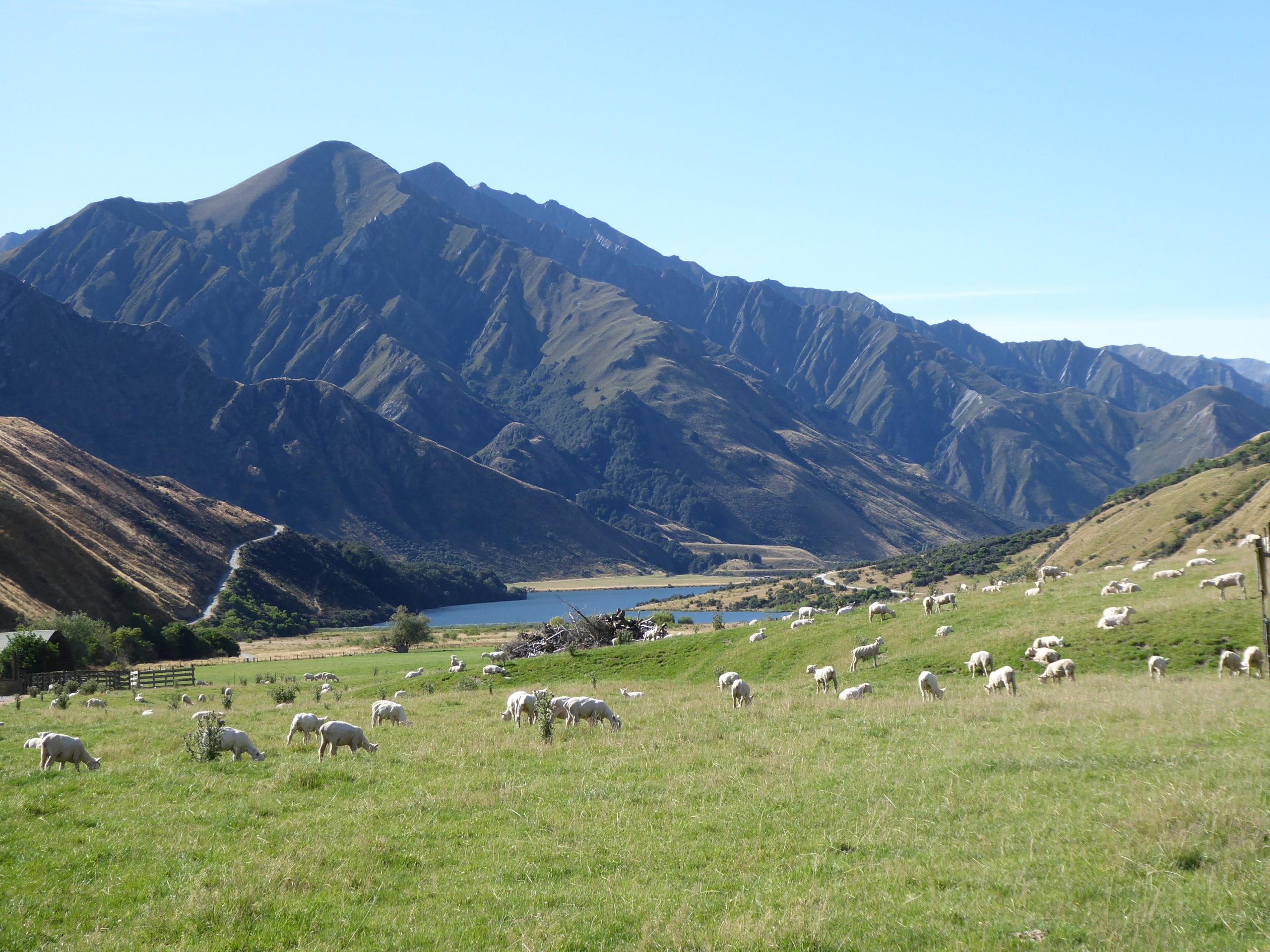
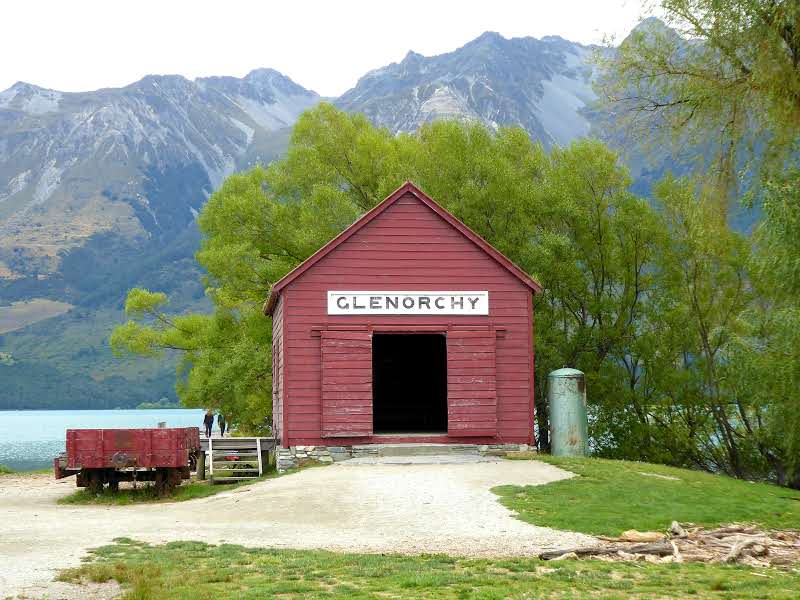
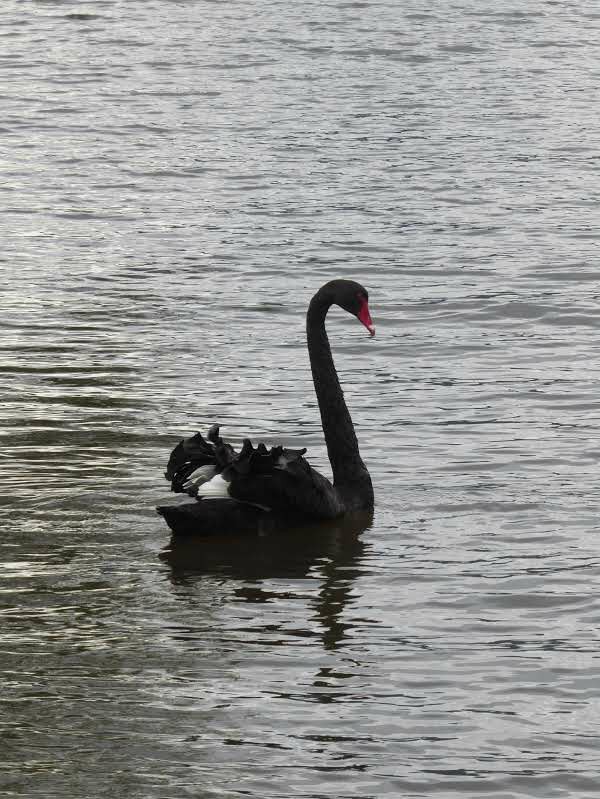
to be continued…
